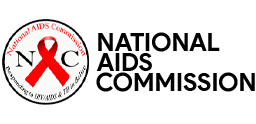How Can You Protect Yourself and Others?
Unless you are 100% sure that you and the people you are intimae with do not have HIV, you should take seps to prevent getting infected. People recently infected (within the past 2 or 3 months) are most likely to transit HIV to others. This is when their viral load is the highest. In general, the risk of transmission is higher viral loads. This fact sheet provides an overview of HI prevention, and refers you to other fact sheets for more details on specific topics.
Sexual Activity
You can avoid any risk of HIV if you practice abstinence (not having sex). You also won’t get infected if your penis, mouth, vagina or rectum doesn’t touch anyone else’s penis, mouth, vagina or rectum. Safe activities include kissing, erotic massage, masturbation or hand jobs (mutual masturbation). There are no documented cases of HIV transmission through wet clothing.
Having sex in a faithful relationship is safe if:
- Both of you are HIV-negative
- You both have sex only with your partner
- Neither one of you guys get exposed to HIV through drug use of other activities
Oral sex has a lower risk of infection than anal or vaginal sex, especially if there are no open sores or blood in the mouth.
You can reduce the risk of infection with HIV and other sexually transmitted diseases by using barriers like condoms. Traditional condoms go on the penis, and new type of condom goes in the vagina or in the rectum.
Some chemicals called spermicides can prevent pregnancy but they don’t prevent HIV. They might even increase your risk of getting infected if they case irritation or swelling.
Drug and Alcohol Use
The four most common drugs used in Belize are alcohol, marijuana, cocaine and crack. Studies conducted have shown a strong correlation between drugs use and the transmission of HIV.
If you’re high on drugs, you might forget to use protection during sex or affect your ability to negotiate or apply safer practices. Furthermore, under the influence of drugs, individuals are more prone to bruising and tearing at points of sexual contact thereby increasing the chances of HIV transmission through open wounds.
If you use drugs, you can prevent infection by not injecting them. If you do inject, don’t share equipment. If you must share, clean equipment with bleach and water before every use.
Vertical Transmission
With no treatment, about 25% of the babies of HIV-infected women would be born infected. The risk drops to about 4% if a woman takes AZT during pregnancy and delivery, and her newborn is given AZT. The risk is 2% or less if the mother Is taking combination antiretroviral therapy (ART). Caesarean section delivers probably don’t reduce transmission risk if the mothers viral load is below 10000.
Babies can get infected if they drink breast milk from an HIV-infected woman. Woman with HIV should use baby formula or breast milk from a woman who is not infected to feed their babies.
Prevention of Mother to Child Transmission claims many successes in Belize. The prevalence rate among pregnant women is a mere 0.59% representing a decrease in the total numbers of HIV infections in 2012. Out of the total number of detected positive cases among pregnant women, 94.7% received prophylaxis. There were a total of 44 deliveries to these women and all infants received ARVS at the time of delivery.
Contact with Blood
HIV is one of the many diseases that can be transmitted by blood. Be careful if you are helping someone who is bleeding. If your work exposes you to be blood, be sure to protect any cuts or open sores on your skin, as well as your eyes and mouth. Your employer should provide gloves, facemasks and ither protective equipment, plus training about how to avoid diseases that are spread by blood.
